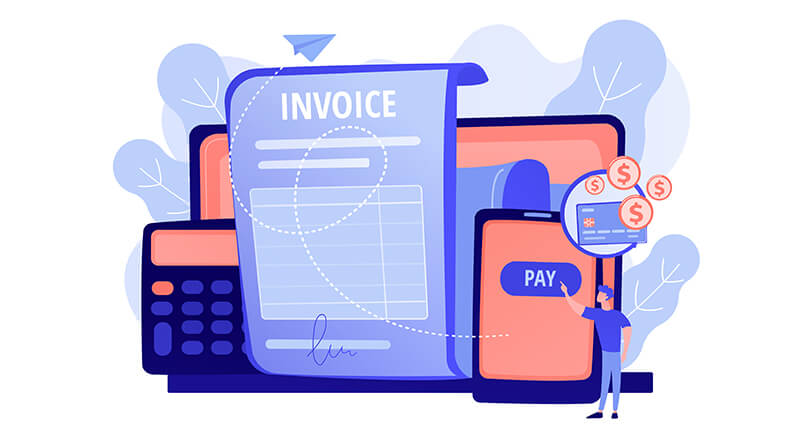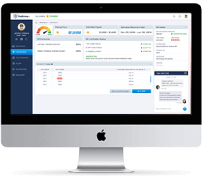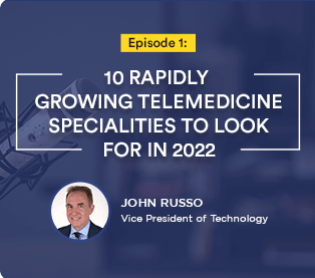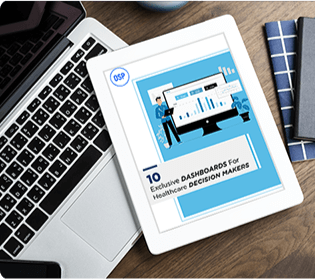The medical billing process in the healthcare industry is a heavy-duty job that involves a plethora of complex data on medical records, patient information, insurance claims, etc. All of these processes involve a mountain of paperwork and complexities for healthcare professionals and staff. Errors in medical billing management can cause devastating consequences for the healthcare organization and adversely affect overall profitability.
Owing to the difficulties associated with the healthcare billing system, in 1991, the Workgroup for Electronic Data Interchange (WEDI) was introduced into the healthcare system. This development was intended to address the billing challenges health facilities face, improve workflow processes, and reduce overall expenses. Consequently, in 1996, the Health Insurance Portability and Accountability Act (HIPAA) was established toward secure EDI billing. HIPAA compliance is a means to secure health data from breaches and maintain privacy.
Why EDI is Essential Today?
Electronic Data Interchange (EDI) billing is an electronic billing method that uses advanced technology toward sharing data and other related information with standard protocols. Medical EDI is considered the most efficient and reliable means for electronic data exchange relevant to medical claims processing and other billing communication. The privacy of electronic health records is maintained through medical records management, and communication is limited to taking place only between healthcare entities. EDI medical billing software offers healthcare provider solutions designed to provide dynamic solutions that address billing pain points concerning claims, reimbursements, eligibility, and inquiry. Healthcare organizations stand to gain a considerable edge by adopting custom healthcare solutions and healthcare automation with EDI in medical billing.
EDI Billing and HIPAA
HIPAA is the recognized and authorized protocol that supports the submission and processing of insurance claims. It works as a security blanket for the exchange of health data among different healthcare entities. The establishment of HIPAA eradicated discrepancies in billing communication and created universal compliance for secure data processing and transmission.
The details of HIPAA are as follows:
- The HIPAA Privacy Rule — To protect patient information
- The HIPAA Security Rule — To protect patient data security
- The HIPAA Enforcement Rule — To set guidelines for HIPAA violations
The Workings of EDI Electronic Billing

EDI Mapping: Incorporating mapping in the EDI billing software offers the mapping process to standard EDI documents, along with HIPAA compliance, toward the healthcare billing process. All regular billing records are transferred into EDI formats through cloud computing in healthcare. Turning regular health and billing data into EDI formats ensures the security of sensitive data since these formats are not directly readable. The mapping process seamlessly moves the documents between multiple healthcare entities through integrated healthcare systems.
B2B Transfer: Transmission of EDI billing files, according to HIPAA rules, is undertaken in an encrypted fashion. These comprehensively secure files are then exchanged between parties through a Managed File Transfer (MFT) platform. Under the EDI system, files are transferred through healthcare interoperability and healthcare analytics solutions on this MFT platform. Healthcare providers can send these files to payers, insurance agencies, and pharmacies, and vice versa. Several secure networks for electronic data interchange in healthcare, such as AS2, SFTP, MLLP, etc.
Testing and Validation: Next in line in the EDI system is the validation of the relevant documents. This step requires rigorous testing of EDI in healthcare. Healthcare data is usually sensitive data, and therefore, the testing and validation of data at every level are crucial in EDI healthcare. There are multiple verification steps involved in the testing and validation phase of electronic documents. Every step should be incorporated within the EDI solutions. Just as clinical data analysis uses health data for meaningful purposes, EDI solutions are designed to use medical data for billing purposes.
Integration: Integrated EDI systems use these encrypted documents for multiple billing purposes through integrated care management. Once the healthcare recipients receive the documents, they are translated into usable business formats for various purposes, such as insurance verifications, accounting, healthcare administration, etc. Like how health data is applied toward mHealth and population health management, integrated EDI systems can use data to financial requirements.
Features to Look Out For in Healthcare EDI Solutions
Electronic Claims Management
Handling the workflows associated with claims can consume a significant portion of the time and energy of the staff at a healthcare organization. Everything from data entry, claims submission, and claims tracking, coupled with reconciliation, is highly cumbersome and prone to errors. In light of this, medical billing software must-have features for managing claims.
The claims management feature must include denial management, claim status monitoring, claims scrubbing, and claim assessment. These functions will streamline the overall process of adjudicating claims and accelerate associated workflows significantly.
Medical Coding
Medical coding involves translating all the billable medical services rendered to patients into standardized ICD codes. This helps provider organizations generate the claims to be sent to payers for reimbursement. An EDI healthcare software with a feature for medical coding would accelerate the process, in addition to preventing errors in it. Research has estimated that coding errors cost providers hundreds of millions yearly. But a coding feature in an EDI system helps minimize coding errors and results in better revenue cycles for providers.
Reporting
The entire process of healthcare billing includes several interlinked processes and workflows. Needless to point out, the whole process generates large amounts of operational data. Analyzing this data highlights the main causes of denials, rejections, accounts receivables, and problems in coding processes, among others. The insights from the analysis help provider organizations implement corrective measures to address pain points and maximize operational efficiency.
Eligibility Verification
Verifying patients’ health plans is one of the first steps in the overall care process. It ensures that the person’s insurance plan covers the medical services that will be provided and the out-of-pocket expenses to be paid by the patient. This is an important feature for any medical billing management software platform.
A feature for verifying patients’ eligibility considers coverage, co-pays, benefits, deductibles, and others to ensure that the payers can reimburse medical services. This feature reduces claim denials and rejections and improves revenues for providers.
User-Friendly Interface
This rule of thumb applies to all types of software, medical or otherwise. When it comes to medical billing, a user-friendly UI/UX makes the platform navigable and directly impacts working efficiency. Additionally, it would reduce the time needed to train the staff at the organization where it’s implemented, not to mention easing day-to-day medical billing workflows.
It is recommended that medical executives view a demonstration of the EDI medical billing software to ensure that the staff can work seamlessly with it.
HIPAA Compliance
Data security is a must for any type of software platform that handles patients’ confidential data. In light of this, an EDI billing platform must comply with HIPAA (Health Insurance Portability and Accountability Act) regulations. This ensures the software has a certain minimum level of data security features stipulated by government regulation. A HIPAA-compliant solution would ensure that patients’ sensitive data won’t suffer leakage or be compromised in any way.
Custom Developed Vs. Pre-Built
Although this is not a feature of the software, it is a major consideration when choosing medical billing software.
A custom-developed software will be designed as per the requirements of an organization. The company developing the application would thoroughly analyze the requirements before deciding on the features and functions. Moreover, it would also reflect the existing mode of operations and workflows, enabling the staff to get acquainted with it faster. However, on the flip side, it would take more time and money than pre-built EDI solutions.
A pre-built EDI billing platform would be ready to be deployed on an organization’s systems. But it would contain a general set of features typical of EDI systems in healthcare. The organization opting for a pre-built solution would have to adjust its workflows accordingly and spend time getting its staff acquainted. But on the positive side, this type of software costs less.
Advantages of Electronic Data Interchange Software:

1. Added Efficiency: Electronic data solutions, much like patient engagement solutions, rely on advanced technological features to offer automated processes in billing. There is little room for manual error with secure and precise data exchange, and billing workflows are seamlessly processed. Regular testing and validation, along with compliance protocols, regulates smooth billing and ensures timely completion. Thus, the whole medical billing process is undertaken with optimum efficiency. Finally, ensuring that the solutions are on a cloud-based platform means that data loss is no longer a concern. Agility and accessibility of data is critical accomplishment within this domain. With enhanced efficiency in medical billing practices, the healthcare organization can immediately expect higher profitability.
2. Added Accuracy: Medical billing is a highly cumbersome process. When undertaken manually, it is prone to increased errors that bring in significant repercussions. The overall process of medical claims involves back and forth between the customer and insurance companies and is quite cumbersome. Paper-based processes and a general lack of technology innovation have hampered the process of claims management. There are volumes of data available, but the lack of structure makes this data unusable. An automated electronic data interchange system offers first-rate billing management software through a reliable and secure platform that connects insurance payers, health providers, and patients. It can be created to provide multi-access channels, instant claims checks, and validation in a fully automated and paperless environment.
3. Added Savings: Returned claims with errors, denied claims, rejected bills, incorrect coding, and insufficient data are just a few of the many woes faced by medical billers. Almost 30% of medical bills are prone to medical billing errors. As medical billing and coding errors increase in frequency, patient experience is diminished, profits are adversely affected, and the overall revenue cycle for healthcare is shunted. Efficiently adhering to EDI in healthcare processes and procedures can evade these outcomes through accurate claims management offered through medical billing software. An automated medical billing may be the answer to your healthcare billing and coding needs for increased savings. When systems are prone to human error, the wisest option is to deploy medical billing software embedded with ICD-10 coding solutions and one that is HIPAA compliant.
4. Added Security: Another trigger for medical billing errors is inaccurate and insufficient data collection and usage. Common medical billing mistakes occur when patient information is not collected comprehensively, and clinical procedures are not filed timely and accurately. Medical billing solutions can offer comprehensive data collection services for holistic data within a medical billing software. Electronic data interchange in medical billing can drastically reduce security breaches by collecting patient data and encrypting it towards medical billing codes. Finally, accurate and complete data erase the possibilities of duplicate claims, further delaying payment processing. Automated information filling, such as social security numbers, demographic codes, etc., can speed up the medical billing process and procedures.
5. Added Standardization: Integration of EDI in healthcare, with other practice management solutions, amalgamates all services related to patient experience, administrative, clinical, and electronic billing. When healthcare providers deploy multiple and separate systems in the organization that cannot function in tandem, the result is common electronic billing mistakes. EHR should not be limited to administrative tasks and clinical processes but rather be integrated and even into the medical billing software. When medical billing solutions can pull out information from one standard system or platform, the possibilities of improper medical billing are diminished significantly. Information collected right from the stage of appointment scheduling up until the endpoint of bill generation keeps medical care functioning efficiently.
6. Reduced Carbon Footprint: This is one of the most underappreciated benefits of using EDI billing software. By replacing multiple paper-based workflows with digital ones, an electronic billing platform significantly reduces the amount of paper. The bigger a medical organization gets, the more paper this software saves. Needless to point out, this goes a long way in reducing the organization’s carbon footprint.
How To Choose a Software For EDI Medical Billing
1. Check the Vendor’s Track Record
This is important when paying for a software platform for EDI in healthcare. Medical software is a large industry and still growing every year. That means numerous companies will offer a wide range of software applications for numerous purposes. So, an executive at a hospital would have to choose from many options, something that could become daunting. But an important factor that indicates the quality of an EDI billing platform is the company’s track record.
If the company has been in business for a decade or so and has a sizeable presence in the market, it is usually a promising sign. It indicates a steady clientele and quality products, not to mention competent leadership. It would be even better if you could personally view the company’s software at a hospital or an insurance payer organization to see for yourself.
2. Support
The ability of the vendor to provide support is also a major deciding factor when purchasing software for EDI in medical billing. Glitches, downtimes, and other problems would cause hospital billing operations to come to a standstill. During such times, timely support would ensure business continuity and prevent operational problems for the organization.
The type of support also offered matters. On-site technical support would be preferable in case of major problems, while online support is suitable for smaller issues. Nevertheless, the ability of a vendor to provide support when needed is an important consideration when buying a medical billing solution.
3. Staff Training
Once the EDI healthcare solution has been implemented, the vendor must provide training for the staff at the organization it is deployed. This training must be comprehensive and enable the staff to carry on operations without hassle. Implementing a medical EDI system is to streamline all the activities surrounding medical billing, so staff must be able to operate the platform naturally.
4. Scalability
A medical organization might grow in size and the services provided. This means it would have to incorporate newer workflows, processes, and protocols regarding billing activities. So, a platform for carrying out a medical billing process at a hospital or clinic would need to accommodate features for additional processes as the organization grows. This could mean more features and more instances of the EDI billing software.
When a hospital or clinic purchases a medical billing platform, it must ensure that the solution can accommodate growth. Otherwise, the organization would have to purchase whole new software, which would cost time and money. On the other hand, if the vendor can add more features as the client’s need evolves, it would go a long way in enabling the vendor to maintain a steady clientele and the hospital to serve its patients well.
Myths About Healthcare EDI
APIs are Better for Small Practices
While it is commonly assumed that EDIs are only suited for large hospitals, they are also suitable for small medical practices. Software for EDI in healthcare can be easily integrated into existing systems at practices. It offers a secure exchange of sensitive data for small practices also.
EDI Solutions Are Not Secure Enough
This is another common myth associated with healthcare EDI. The platform complies with HIPAA regulations and ensures a high degree of security for the data exchanged. It includes protocols and features that prevent data leakage and protect its integrity.
An EDI Will be a Risky Investment
Many providers, especially at small practices, believe that investing in an electronic billing platform might be too big an investment and won’t provide adequate returns. This primarily stems from the fact that a medical EDI depends on the value-added network (VAN) to deliver messages. But what is to be noted is that an EDI automates many aspects of handling data during interchanges, which eventually reduces the average cost per transaction. It will deliver returns in the long run.
Conclusion
Keeping in mind the points mentioned above, it is most advisable to adopt an advanced EDI billing software with automated features when it comes to medical billing. This will ensure that medical billing mistakes, coding errors, incorrect information, and cash flow delays are explicitly avoided. Medical bills are double-checked before being submitted to insurance carriers, and there is no duplication of data entry. Fewer denied and rejected claims, reduced workload for staff, fewer pending claims, increased overall profits, and higher patient satisfaction are all attainable factors with the right kind of EDI billing software.
The industry software technology has constantly been growing since the last decade. As newer technologies emerge, it becomes increasingly important for stakeholders to adopt them to stay relevant. Implementing an EDI billing solution is no longer an option but necessary for the oncoming technological transformation.
About Author

Written by Riken Shah linkedin
Riken's work motto is to help healthcare providers use technological advancements to make healthcare easily accessible to all stakeholders, from providers to patients. Under his leadership and guidance, OSP Labs has successfully developed over 600 customized software solutions for 200+ healthcare clients across continents.


















